October is the second month of autumn and can be a gentle month weatherwise, as it is this year.
Butterfly numbers fall off the cliff in October, leaving us bereft. It is a disquieting and bemusing experience especially when the weather is suitable for butterfly activity and nectar remains available.
While this experience of butterfly scarcity is general across Ireland, it is not universal here. In some southerly locations, butterflies remain active. Red Admiral and Painted Lady butterflies often gather in force in mild southerly coastal areas, feeding on remaining wild and garden flowers before migrating south or, in the case of a few Red Admirals, attempting to breed. Speckled Woods persist longer in south Cork, continuing to station themselves along hedges and grassy hedged lanes, feeding on late bramble, Common Ivy, and ripe fruit. The occasional Small and Large White will be laying eggs on wild and domestic brassicas and the Small Copper will be showing up in warm, sheltered nooks as a few third brood individuals make an attempt at late breeding. There might be a surprise Common Blue and Holly Blue, for the observer in the right place.
A not irregular sight along the south coast during October is the Clouded Yellow butterfly, a strong migrant from warmer regions in southern Europe. Why this butterfly turns up here so late in the butterfly year is unknown, especially as its foodplants have, by now, recovered from the drought experienced in southern Europe in most years. The butterfly can look misplaced in October, its deep mustard yellow an optimistic foil in a land of fading colours and dimming light. Ecologically, it is hard to understand why it migrates here so late because its larval foodplants are in sharp decline and temperatures are falling, factors that militate against successful breeding. This enigma does not obscure the thrill this sight gives the discoverer-the Clouded Yellow is one of our loveliest and most powerful butterflies.
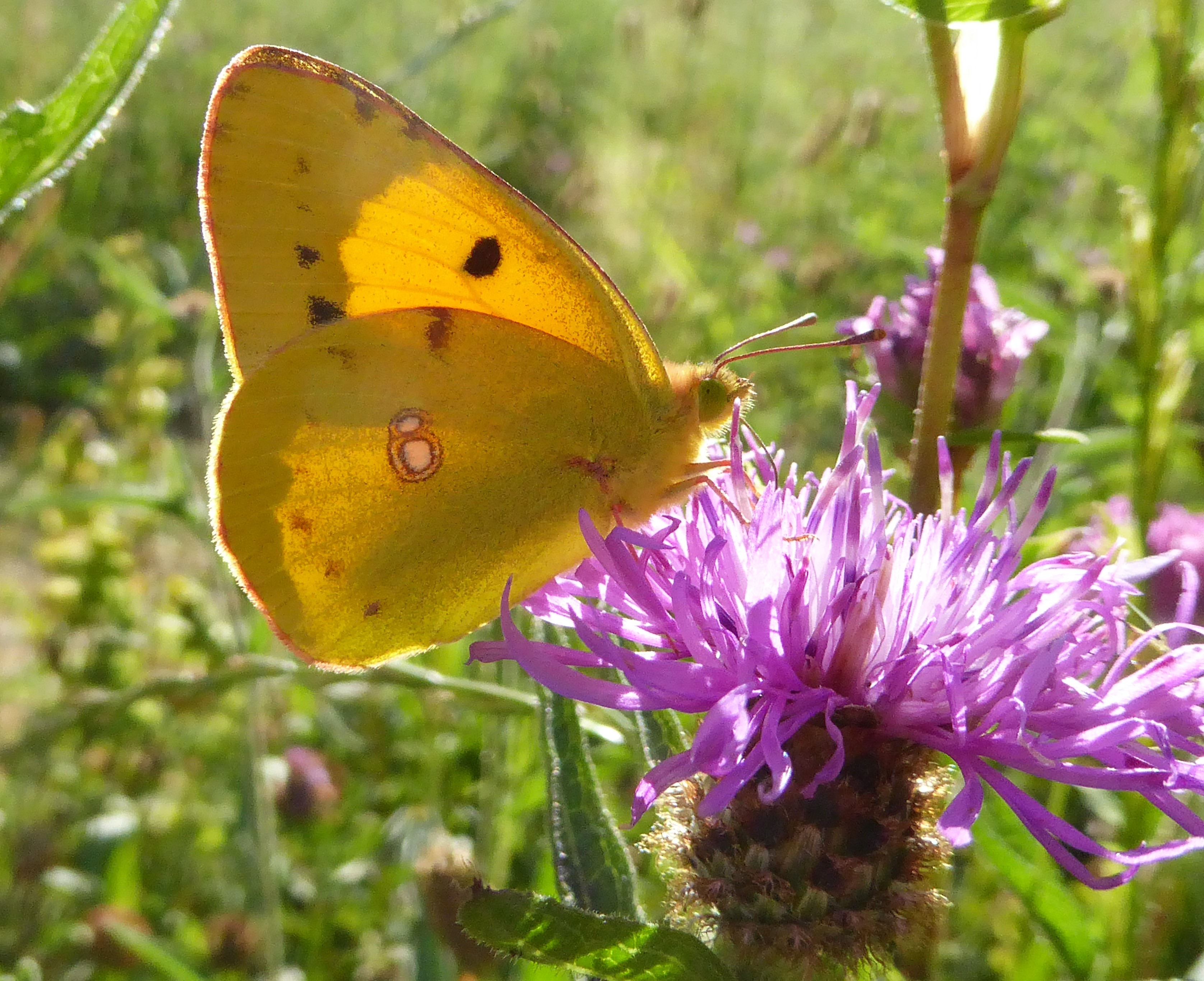
Although butterfly numbers crash in October, moth abundance holds up impressively. There are fewer species in flight, but abundance is still quite high because some species that produce high numbers are autumn flyers. Examples include Beaded Chestnut, Setaceous Hebrew Character and Blair’s Shoulder-knot. These are busy mating and laying eggs and are a vital resource for pre-hibernation bats.
Most autumnal moths are suitably cryptic, matching the more muted hues of the season. While the pretty Pink-barred Sallow pictured next appears conspicuous, it blends nicely with the foliage of trees at this time of year, melting into the crimson and gold mottling found on the leaves of willow and other trees.
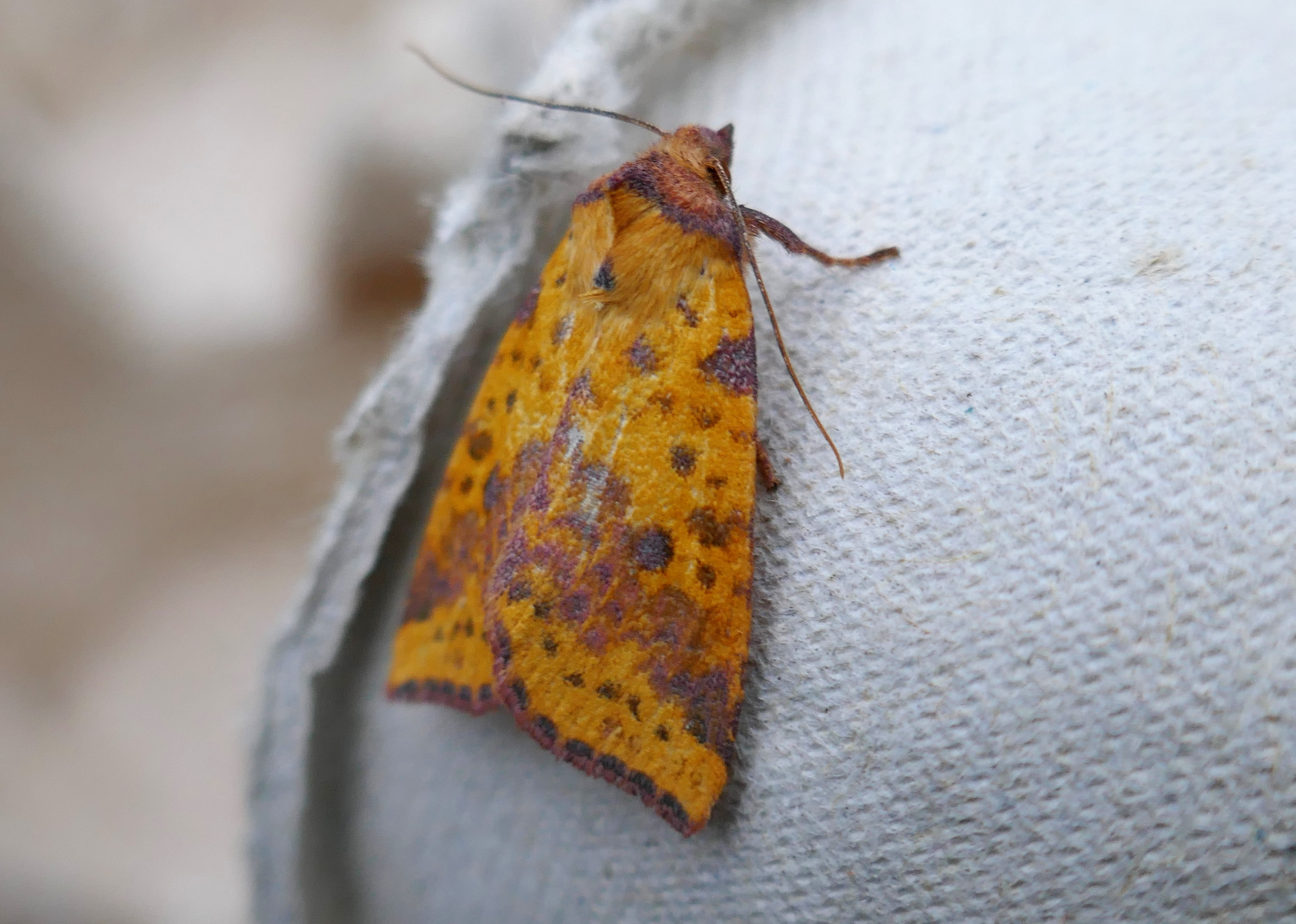
The following moths, the Beaded Chestnut, Yellow-line Quaker and Red-line Quaker are beautifully adapted to autumnal colouring. Like butterflies, moths often settle on similar-coloured surfaces to avoid detection by birds and mammals. Anyone who has trapped moths using a light trap knows how eagerly moths are sought by birds, particularly by Robins, Wrens and Magpies. These birds quickly realise that moths are present in and around light traps and will pick off moths that settle around the trap. Indeed, Wrens will enter traps to take the moths but thankfully this is uncommon.
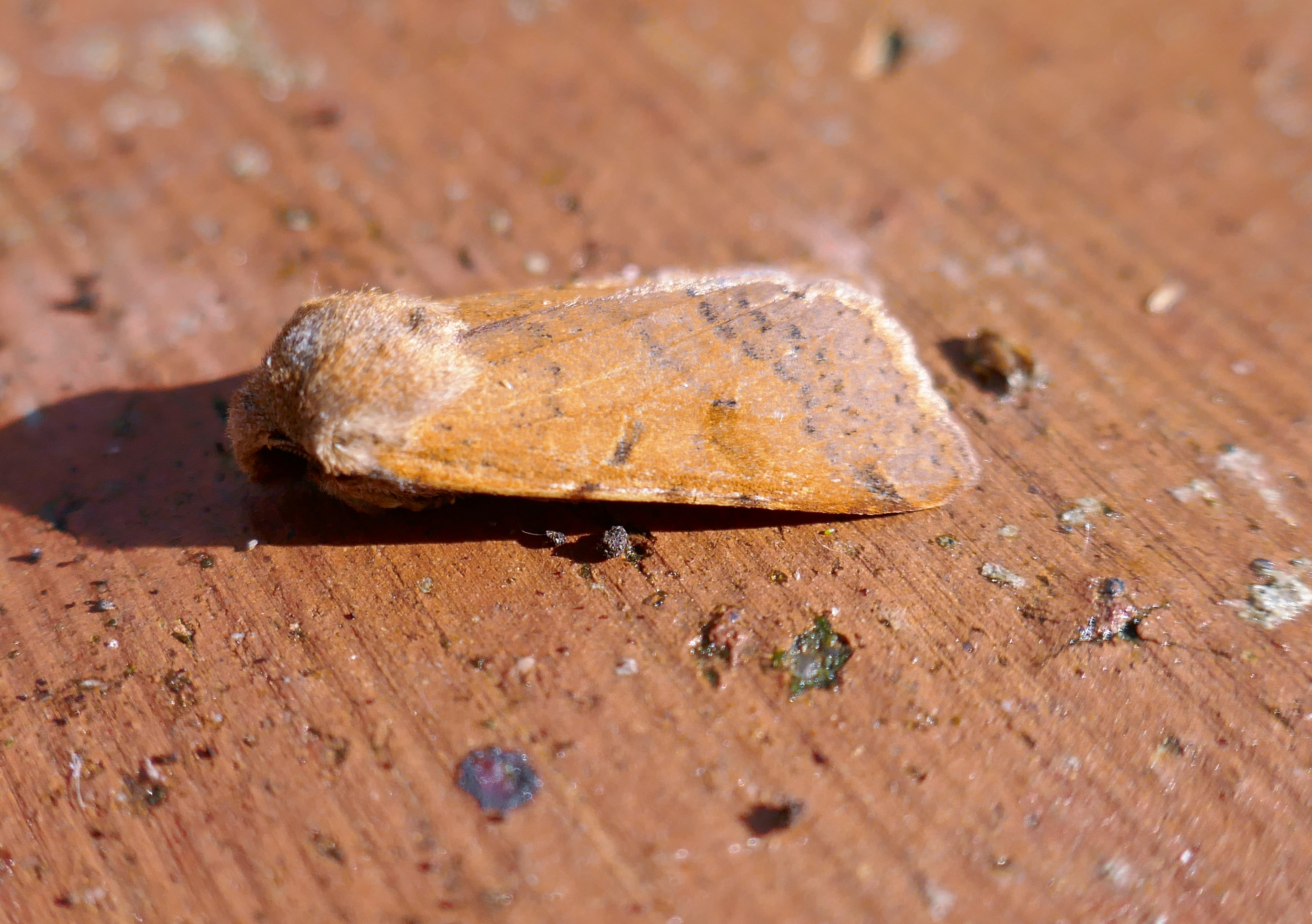
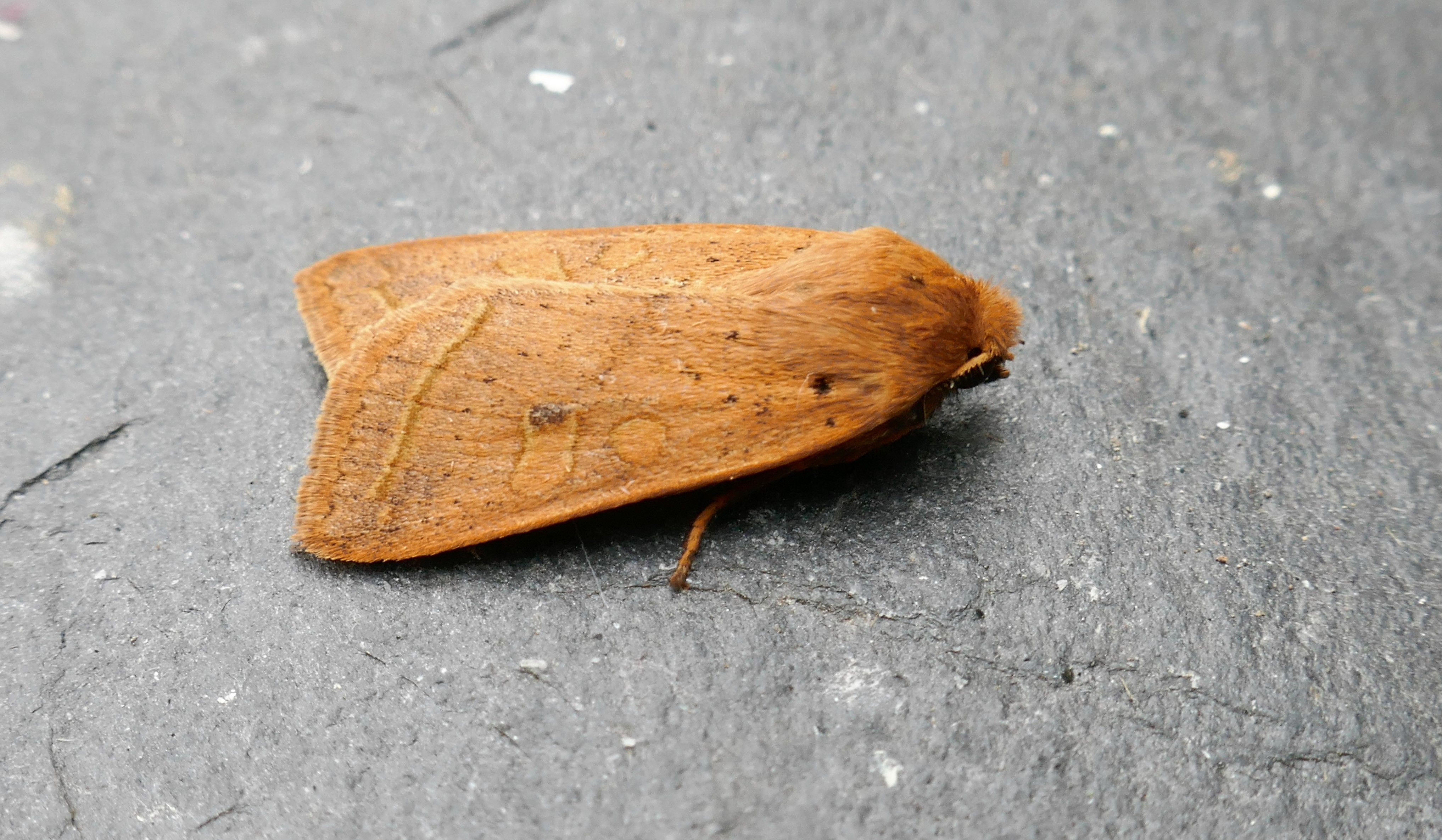
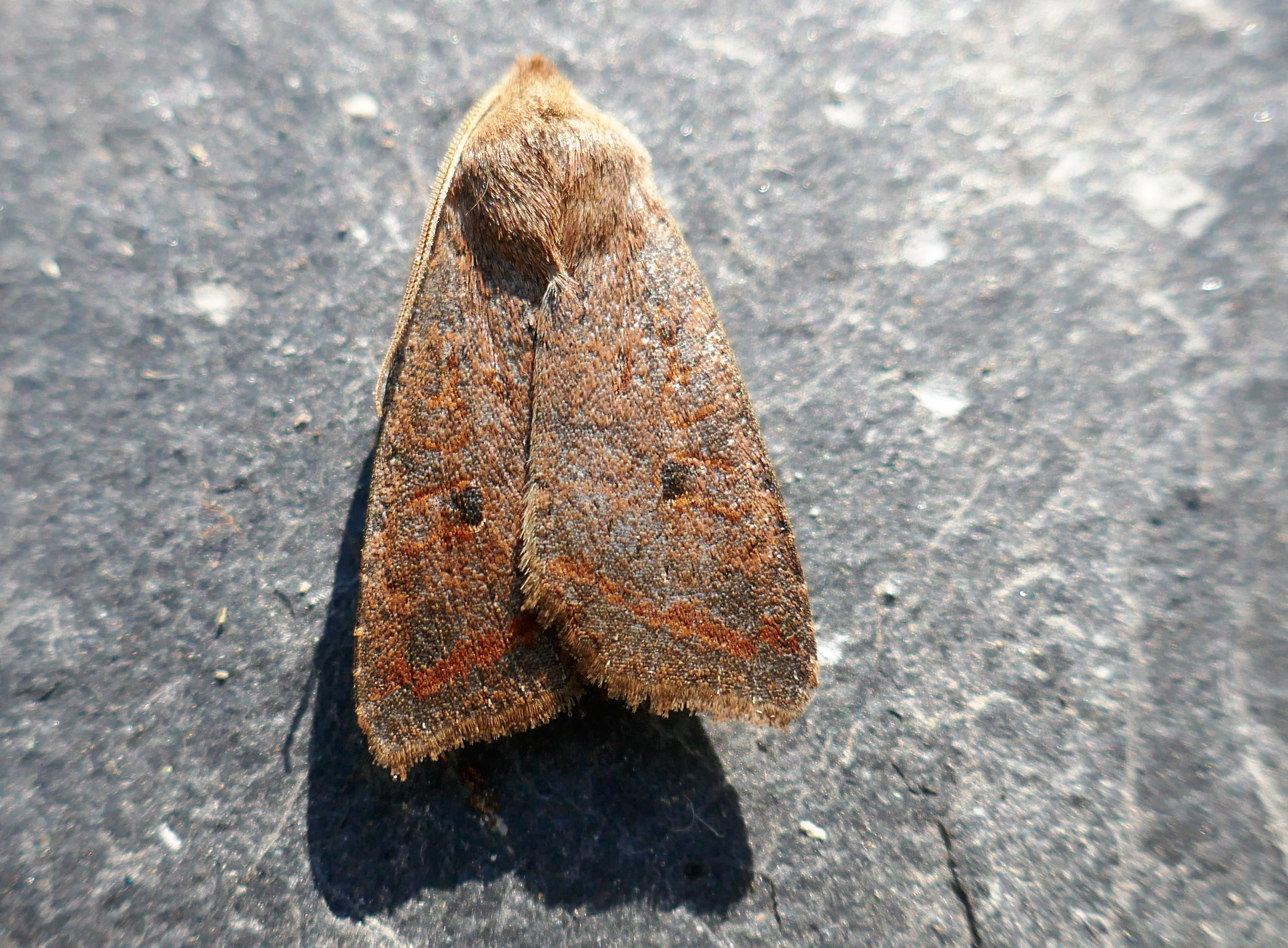
After the moths are identified and counted, moth trappers place the moths in deep vegetation to limit losses. It is interesting that many moths trapped in autumn will fly into trees and scrub when released, which helps to explain why Blue Tits in particular forage among sylvan foliage with such focus.
Blair’s Shoulder-knot flies during autumn and is well adapted to rest on stone walls, tree trunks and fence posts during the day. This moth has colonised Ireland probably as a result of planting Monterey, Lawson’s and Leyland Cypress.
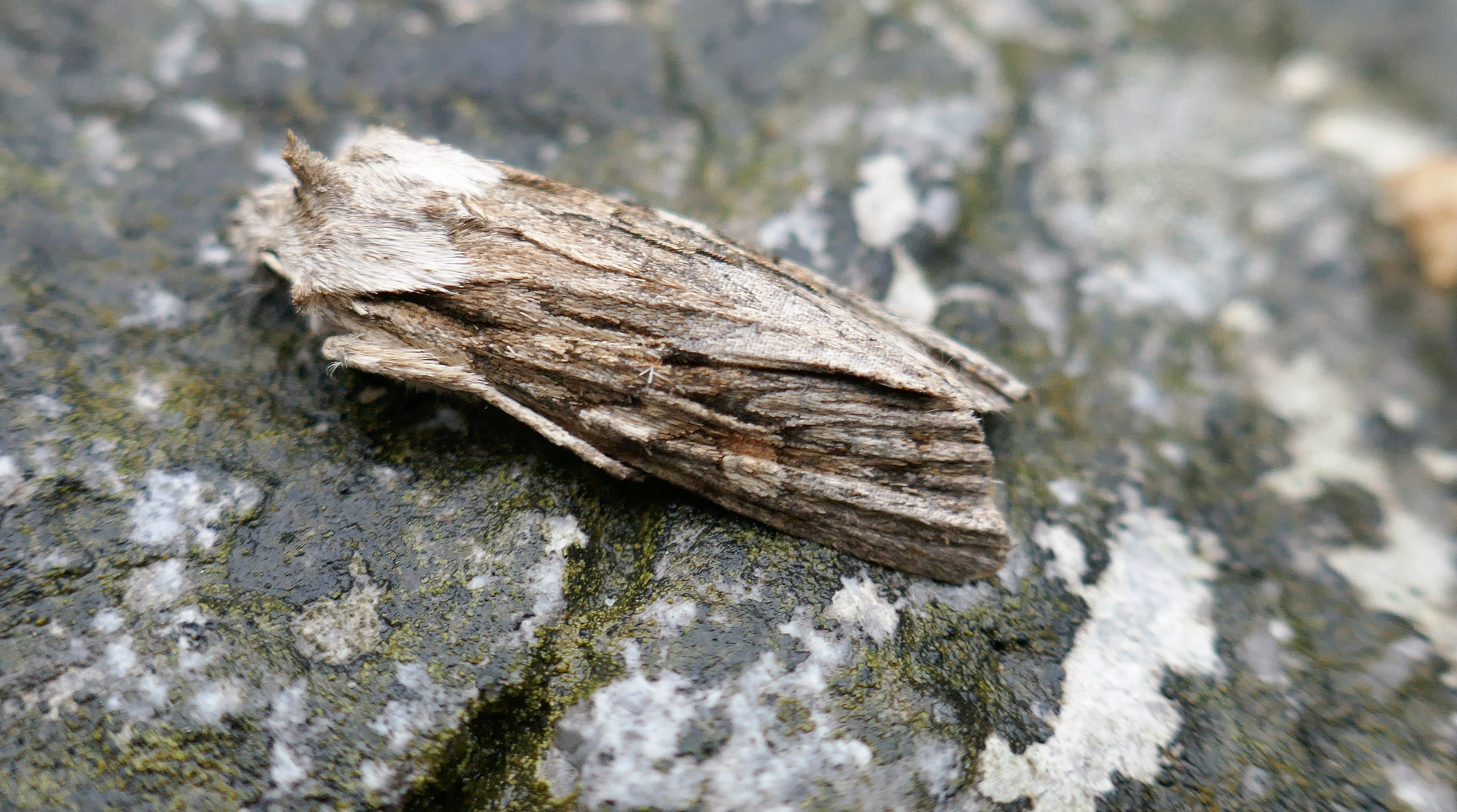
A well-named moth flying now is the Figure of Eight, a species with a scattered distribution and rarely seen in high numbers. Even in areas known for it, this moth does not appear every year, despite systematic monitoring. It is ranked Near Threatened on the Moth Red List published in 2016. Its scarcity does not appear to be linked to foodplant specialisation, because it uses a range of common trees.
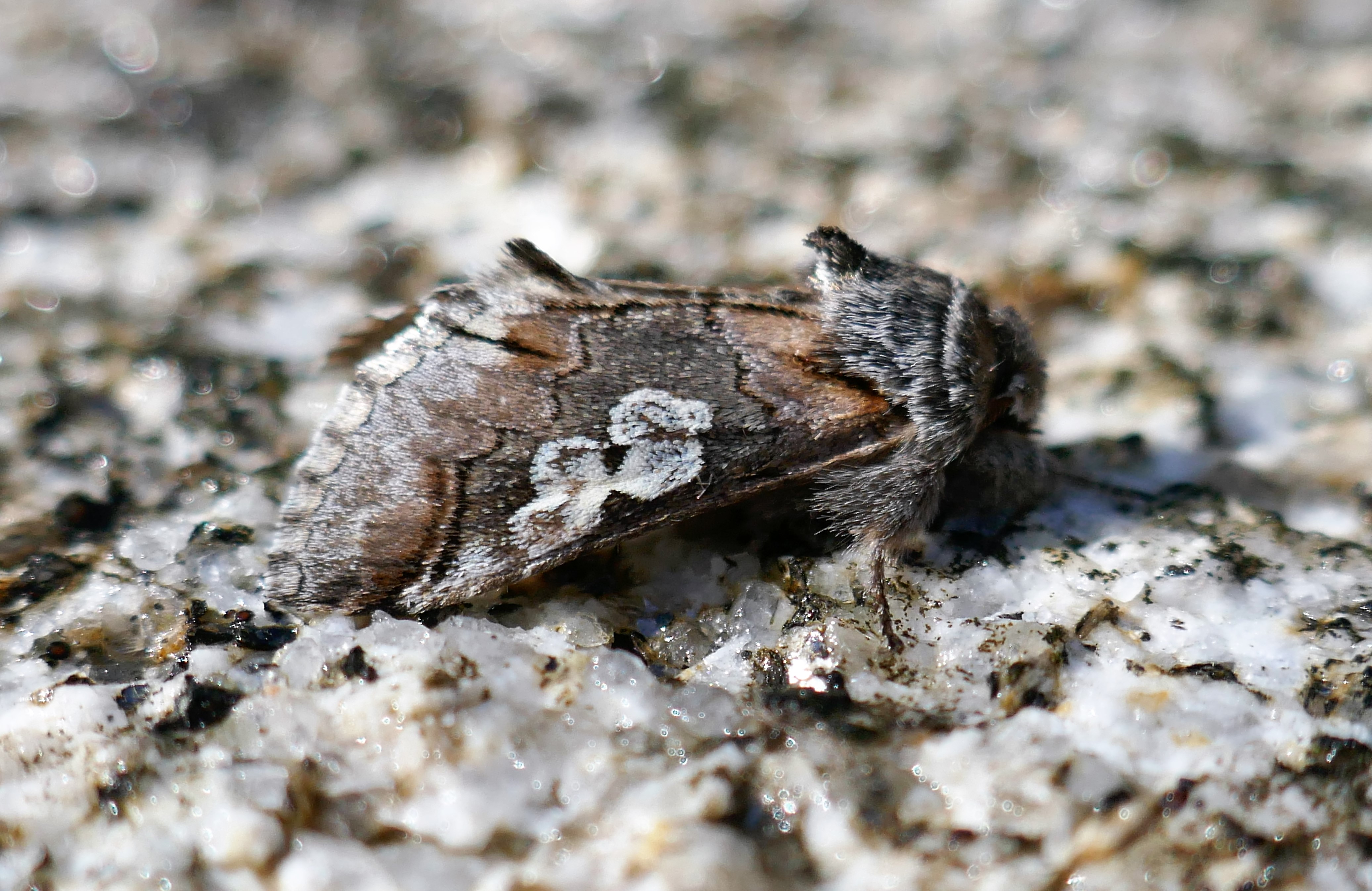
Another common autumn-flying moth is the Black Rustic. With its black cloak-like wings, it is the perfect Halloween moth!
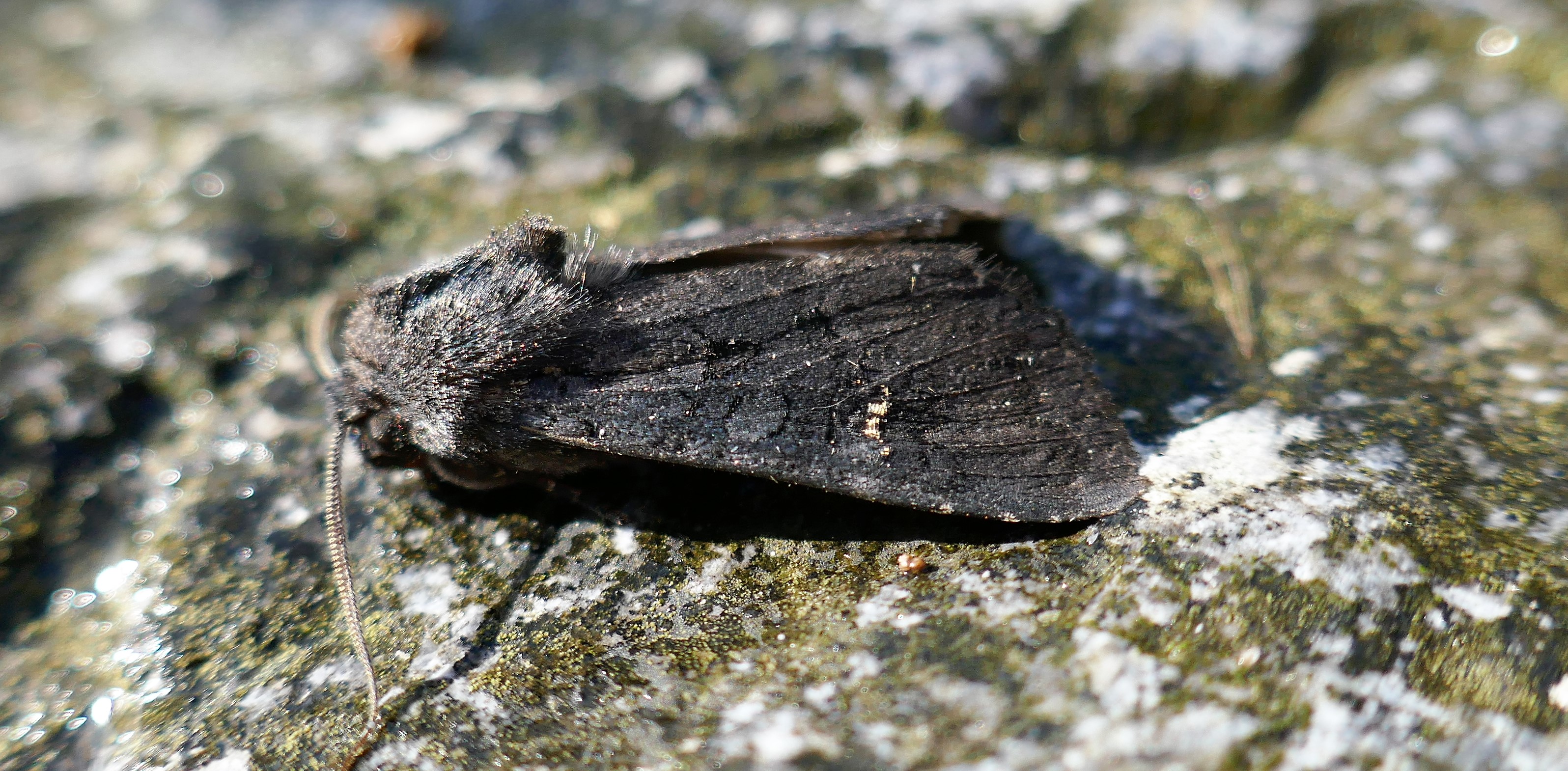
An attractively patterned moth that breeds on Common Hawthorn, Common Blackthorn, Crab Apple, Rowan and other trees is the Green-brindled Crescent. This moth mixes a dusting of metallic green, tawny brown and off-white, blending to perfection on lichen-covered boughs.
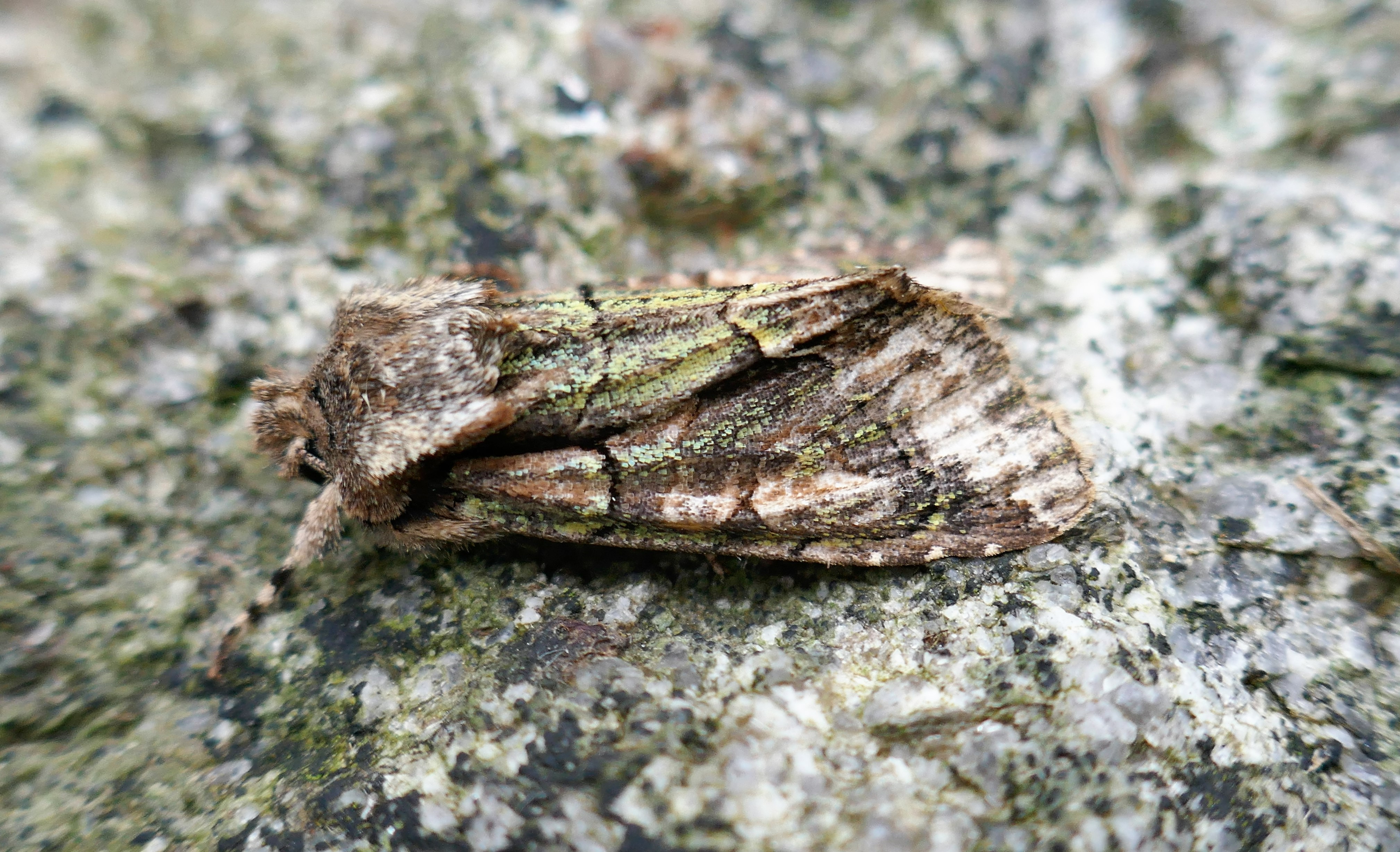
A moth that flies in one generation from August to October and has the muted colouring that befits the season is the Large Wainscot. This moth breeds on Common Reed (which explains why the species occurs in my garden). The caterpillar feeds inside the plant’s roots and the stem bases.
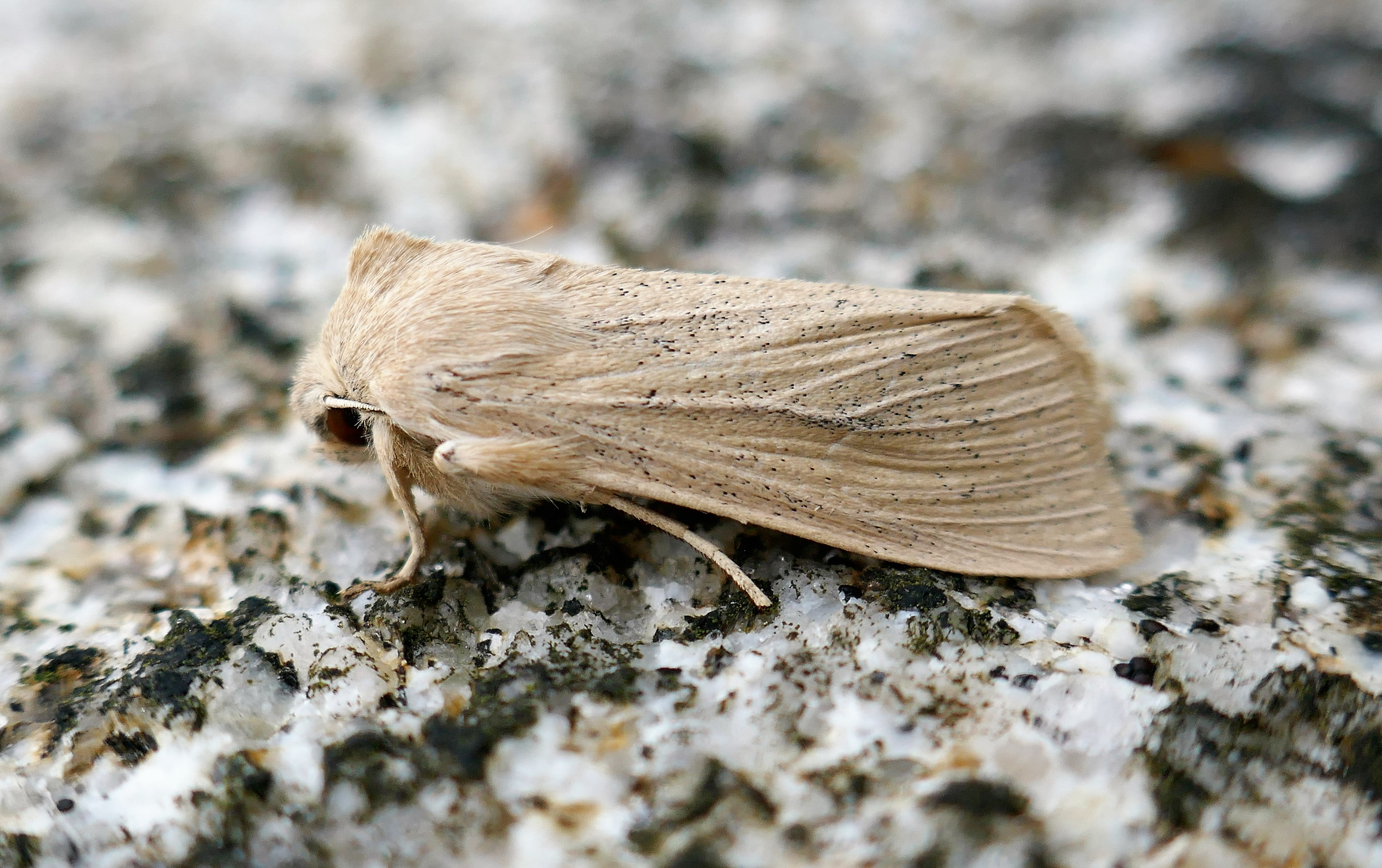
A real autumn beauty, widespread and common, but not very abundant, is the Merveille du Jour. This moth is a deeper green overall when freshly emerged than the example shown here, and is a real delight for moth lovers.
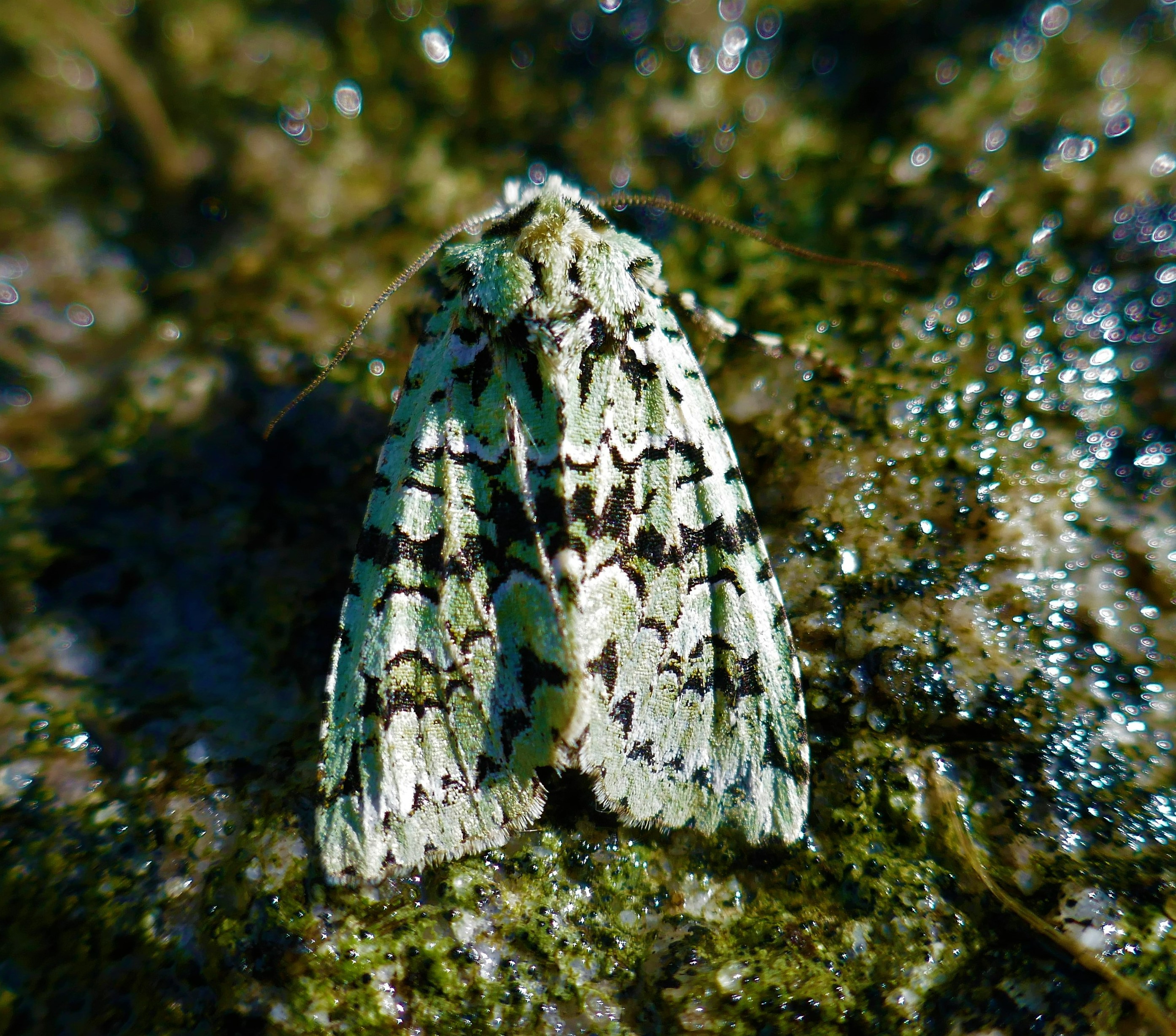
If you do not have a light trap, check the outdoor light during mild nights. You will not see the same number or range of species that appear in light traps, but you will see some of our moths. If you would like us to identify them, send a photo to us at conservation.butterfly@gmail.com.
All photographs J. Harding

